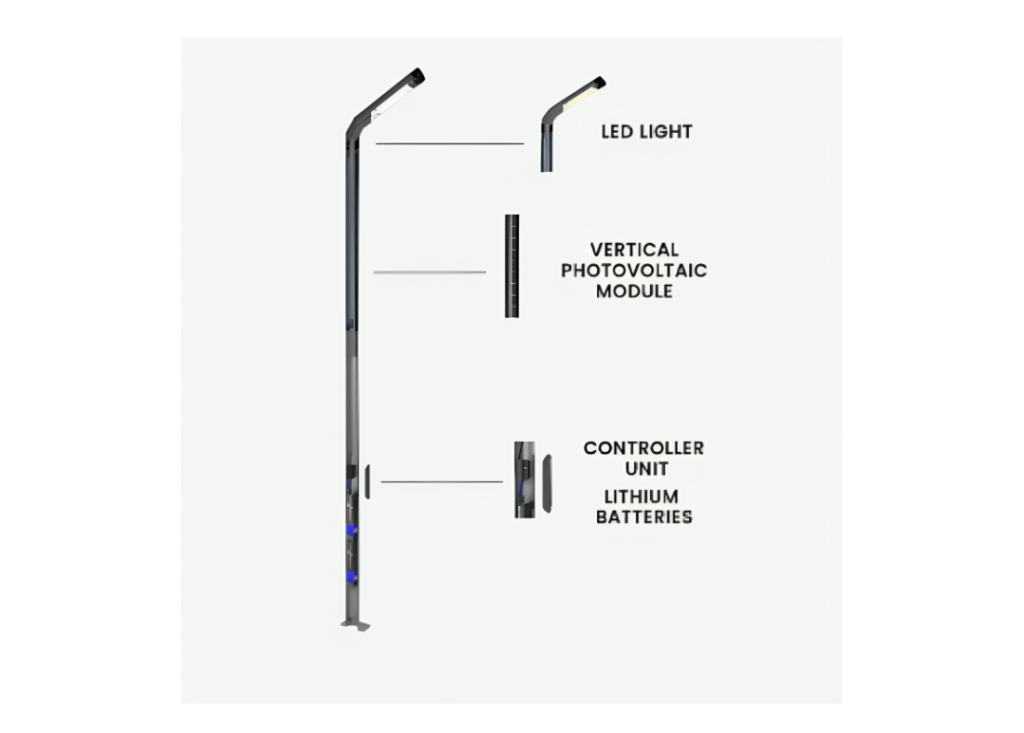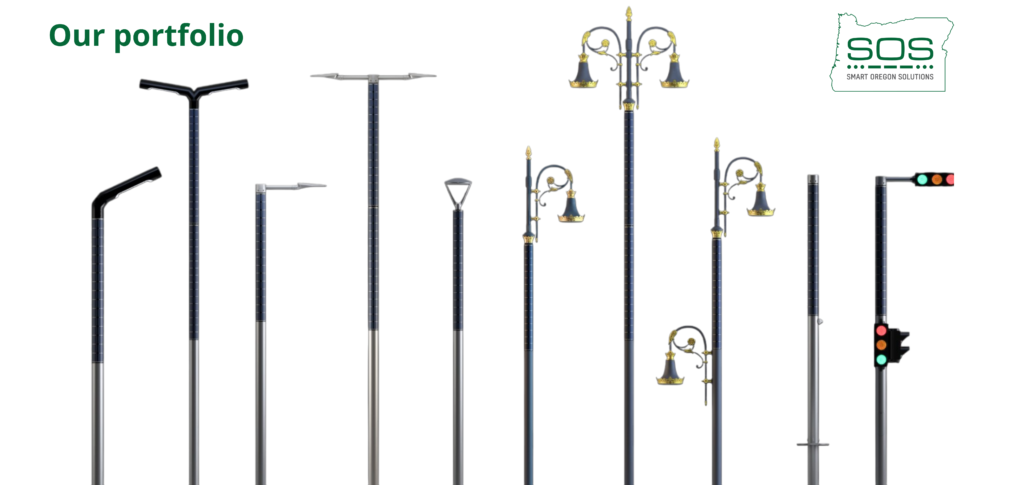The Hidden Energy Crisis in Cities
Streetlights keep our cities safe but also drain a shocking amount of electricity. Thousands of streetlights burn energy every night, with traditional high-pressure sodium (HPS) lamps consuming massive amounts of power. Despite LED upgrades, cities still face mounting energy demands and increasing strain on an overburdened electrical grid.
City managers often dismiss the issue, pointing out that the cost per streetlight is as low as $3.00 per month. But the real problem isn’t just the price—the sheer scale of energy consumption. With city grids under pressure and climate change pushing the need for sustainable solutions, finding a better way to power streetlights is more critical than ever.
Enter Agamine Solar—a groundbreaking solar-powered streetlight that can cut municipal energy demand by 75% to 100%. More than just an efficient lighting system, Agamine Solar is an infrastructure game-changer. Each unit generates and stores its power using onboard battery storage, turning every streetlight into a self-sustaining microgrid.
How Much Energy Do Streetlights Use?
The numbers speak for themselves:
LED Streetlights (60W): A typical grid-powered 60W LED consumes 0.72 kWh daily, so converting 100 streetlights to Agamine Solar could provide enough energy to power 2.45 average homes.
250W High-Pressure Sodium (HPS) Lamps: These power-hungry lights use 3 kWh per day each, meaning converting them to Agamine Solar could generate enough excess energy to power one household per pole.
The Cost vs. Energy Debate: Looking Beyond the Dollar Sign
Too often, city managers assess streetlight upgrades purely based on cost-per-kWh. While the direct savings may seem small, Agamine Solar‘s actual value lies in its ability to reduce demand on an overtaxed electrical grid.
Take California’s wildfires, for example. Investigators have linked multiple fires to transformer failures, partly caused by excessive grid loads. A citywide rollout of Agamine Solar could ease that burden, helping prevent blackouts and even catastrophic failures that lead to costly disasters.
Why Cities Should Invest in Agamine Solar Now
The advantages of Agamine Solar extend far beyond just saving money on power bills:
Eliminates Energy Costs — Agamine Solar generates and stores its power, reducing grid dependence to nearly zero.
Reliable Power Storage — Onboard battery storage allows each streetlight to function as a microgrid, ensuring uninterrupted operation—even during outages.
Eases Grid Pressure — With fewer streetlights pulling from the grid, cities reduce the risk of costly infrastructure breakdowns and blackouts.
Potential Revenue Generation — With surplus energy freed up, cities and utilities can redirect power where needed most, creating new financial opportunities.
Sustainability & Carbon Reduction — Agamine Solar slashes emissions, making it a crucial tool for cities striving to meet climate goals.

A Smarter Investment for the Future
While the initial cost of Agamine Solar may be higher than that of traditional LED streetlights, the long-term ROI is undeniable. Lower energy bills, reduced infrastructure costs, and enhanced reliability make it a wise investment for any forward-thinking city.
Instead of focusing on cost—per—pole, city leaders should consider the impact—per—city. Adopting Agamine Solar today will save money and build a more resilient, sustainable urban environment for future generations.
The time to act is now. Cities must embrace innovative solutions like Agamine Solar to stay ahead of the energy crisis and take control of their infrastructure before it takes control of them.

Barry Redman
CEO/Founder NetZero Energy, LLC
Smart Oregon Solutions, VP of Operations
971-506-1006


